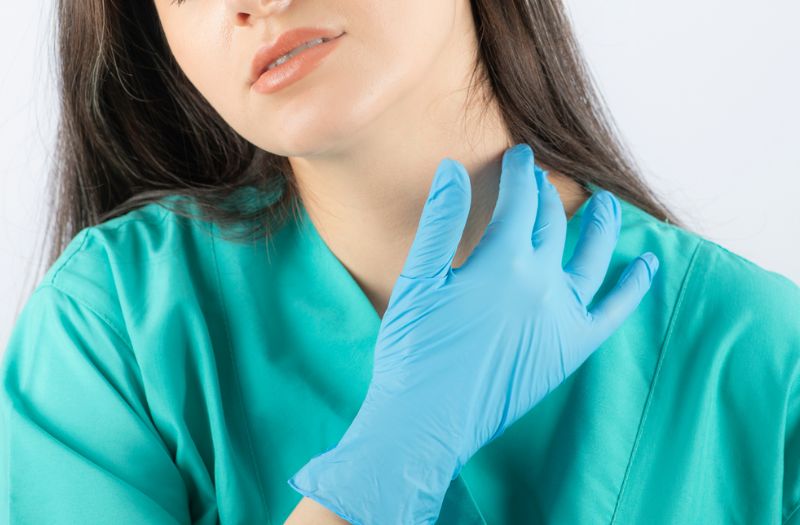After the operation for a cervical herniated disc, the spine surgeon will close the incision using either sutures or staples. This depends, fundamentally, on the size of the incision, the tension around the edges, the type of operation, and the preference of the surgeon. Here's what you need to know about the incision healing process after surgery.
The scar from a cervical hernia operation is usually small, although this may vary depending on the type of procedure used. In the case of disc replacement surgery (ADR), a very small incision is used and will be placed in the front of the neck.
If there are no complications, the stitches (or staples) can be removed 10 days after the cervical spine surgery. However, in some cases, the wait may be a little longer – from one to two weeks -- depending on the state of the incision and the rate of healing.
The doctor takes in consideration aspects such as whether the patient is diabetic, or has a tendency to form keloids (thickened and raised scar tissue), or other factors. In any case, the surgeons at Instituto Clavel will examine the incision site at the first follow-up visit after the surgery.
Once the stitches are removed, we recommend keeping the site of the incision moisturized for a while, which will help it continue to heal and will make the scar on your neck look better. It is best to use an ointment indicated by the specialist, for one or two weeks after surgery.
In addition, it is important to avoid going in the pool or sea until the incision has healed completely, because of the risk of infections. Also, avoid exposing the scar to direct sunlight for at least three months, unless you use a sunscreen of factor 90.
Find out more about cervical disc replacement surgery (ADR)

Caring for your incision at home after surgery
Keeping the incision site clean is key to helping it heal properly. The hands of the person who performs the wound care, whether it is someone else or you do it yourself, must be first washed very well with plenty of soap and water and then dried thoroughly. This may sound obvious, but it is essential not to skip this step. Also, keep in mind the following points:
- Use sterile gloves, gauze, saline, antiseptic and adhesive patch (sticking plaster).
- Open the gloves first, and use the wrapper as a clean surface on which to place the treatment materials listed above, maintaining maximum sterility to prevent infection of the incision.
- Have a bag handy to dispose of the waste.
Inspect the appearance of the wound as you clean it. It is normal for it to become slightly inflamed and red during the first two weeks; this does not mean that there is a problem. However, after the first 4 days, you should see that the edges have joined and the wound no longer leaks any liquid. Watch out for any of the following symptoms and seek medical advice if they appear:
- It feels warm to the touch or is very painful.
- Increased hardness in the area.
- Discharge of pus and fever.
The frequency with which you must dress and clean the wound will depend on the state it’s in and the recommendation of your doctor. The usual practice is to clean the site and change the dressing once a day, or every other day, until the stitches or staples are removed. You can shower two to three days after the surgery, but you must dry the incision site very well afterwards and then put on a fresh dressing.
Recovery after cervical hernia surgery
If you are a smoker, to improve healing of the scar you should stop smoking a month before the operation and avoid doing so after the operation. Other things to keep in mind that will affect how the scar heals are:
- A diet rich in protein (meats, fish, eggs), as well as vitamin C, plays an important role in helping new tissue grow.
- As we mentioned before, avoid getting sun on the scar once the stitches or staples have been removed, otherwise it may become hyperpigmented.
Get in touch with our experts at Instituto Clavel
Categories: Spine treatments, Wellness, Rehabilitation
